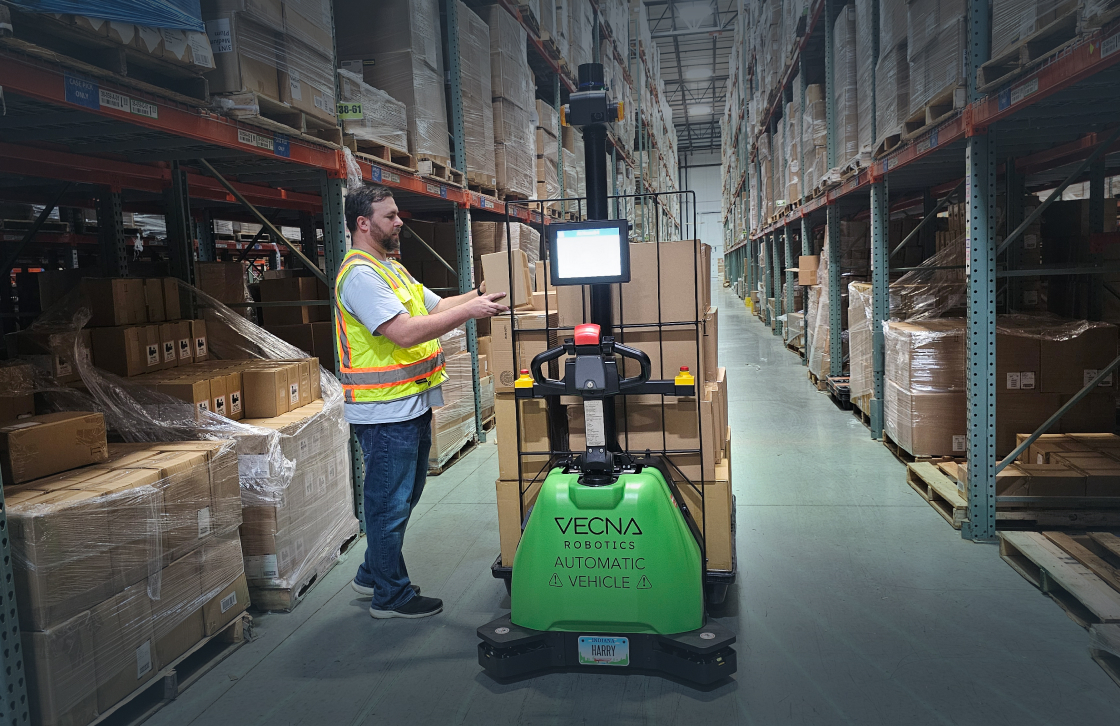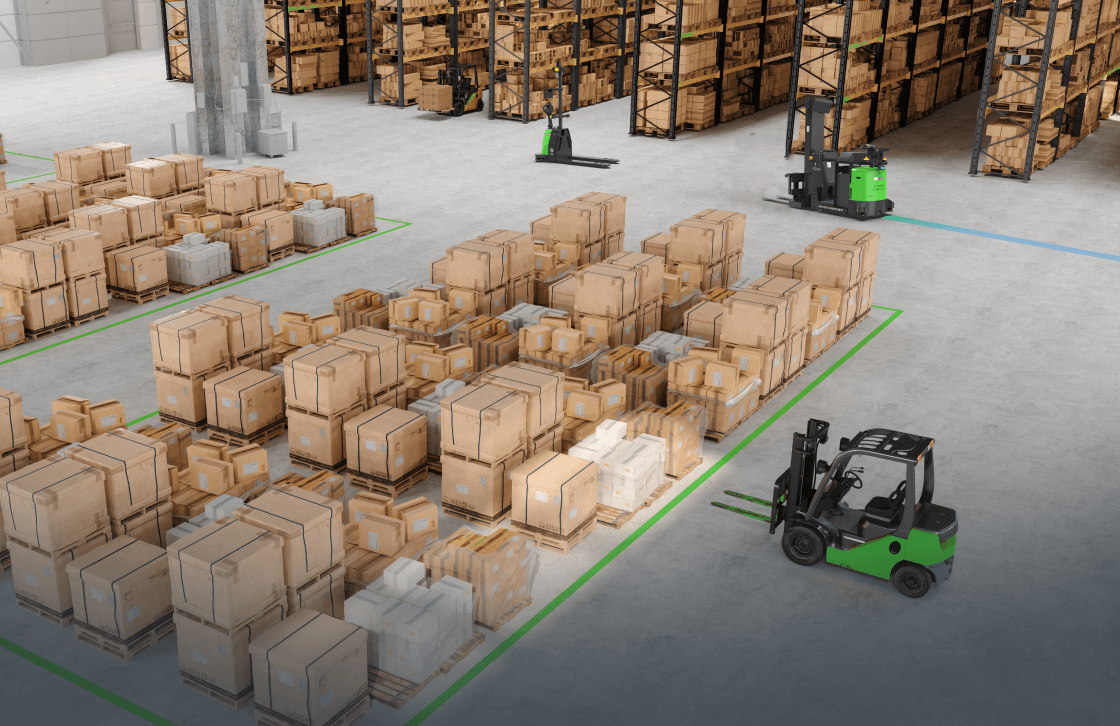Running a warehouse isn’t easy, but there are common warehouse setup mistakes that make it harder than it needs to be. Especially when things are only getting more complex. The pressure on warehouses to perform has skyrocketed due to the combination of supply chain bottlenecks, rising online sales, and the growing demand for fast shipping and delivery. These pressures are compounded by broader macroeconomic issues such as trade uncertainties, regulatory changes, technological advancements, and environmental considerations.
Now some factors that stand in the way of warehouse performance are unavoidable—like consumer demand, widespread labor shortages, limited space, and the availability of inventory—whereas other challenges are more easily mitigated. Beyond these inherent complexities, there are also self-inflicted pitfalls that warehouse operators may unknowingly fall into. Addressing and avoiding common warehouse setup mistakes can alleviate many of these burdens and drive significant operational improvements. This article examines the ten warehouse setup mistakes to avoid and where automation can come in to help enhance warehouse operations. By focusing on strategic planning, continuous improvement, and leveraging cutting-edge automation technologies, warehouses can increase efficiency, minimize labor costs, and adapt dynamically to ever-changing market demands, paving the way to greater resilience and success in today’s competitive landscape.
- Lack of proper layout design: One of the most common warehouse mistakes in warehouse setup is a lack of proper facility layout design. This can lead to inefficient use of warehouse space, difficulties in finding items, and increased labor costs. A strong layout of the warehouse floor can pave the way to future enhancements with robotics, as well as create an adaptable environment that can quickly respond to changing market demands. Automation, such as warehouse management systems (WMS) integrated with artificial intelligence and real-time data analytics, can help optimize the layout of the warehouse, providing a dynamic platform that continuously evaluates and improves flow patterns, storage configurations, and accessibility. This not only enhances operational efficiency but fosters scalability and agility, allowing warehouses to evolve seamlessly with business needs and technological advancements.
- Inadequate inventory management: Another one of the more common warehousing mistakes is inadequate inventory management, which can lead to stockouts, overstocking, and wasted space. Products can even expire causing issues with vendors and strain working relationships, leading to longer-term impacts on reputation and trust. Poor inventory management also has a ripple effect, disrupting other areas of the supply chain and hindering customer satisfaction. Automation can help with this by providing real-time inventory tracking, automated replenishment, and accurate forecasting, utilizing smart algorithms and integrated systems that continuously analyze and adapt to changes in demand patterns and market trends. This can also help avoid dead-stock, which is inventory that doesn’t turn over and creates wasted space, by flagging potential issues early and allowing for proactive adjustments. The embrace of automation in inventory management leads to more strategic decision-making, streamlined operations, and minimizes financial losses due to poor stock management, laying the groundwork for a more responsive and efficient warehousing process.
- Reliance on manual equipment: In many warehouse environments, manual equipment like forklifts remain a staple. However, they require fuel, guidance, and human operators, bringing a set of challenges and expenses that cannot be ignored. Beyond the obvious costs of maintenance and fuel, there’s the less visible expense of training operators and ensuring their well-being. They are dangerous pieces of machinery: it is 90% probable that a forklift will be involved in a severe or fatal accident during its working lifespan. This high probability underscores the human risk involved and the potential financial liabilities and operational disruptions these accidents can cause. And up to 70% of their total operating costs can be attributed to the driver, reflecting the larger financial impact of depending on manual operations. By contrast, automated mobile robots represent a transformative shift in warehousing. These robots use sensory equipment and advanced navigation to take the most efficient path with nominal human intervention. Not only do they optimize operational efficiency, but they also introduce a new standard in workplace safety, as they are designed to detect and avoid obstacles in real time, ensuring smoother and safer warehouse operations.
- Insufficient use of technology: Many warehouses still rely on manual processes, such as paper-based inventory tracking, manual picking, or pallet moving. This can lead to errors and inefficiencies. Automation can help by introducing technology such as barcode scanning, RFID, and automated picking systems.
In today’s fast-paced, digital age, it’s surprising to note that many warehouses still lean heavily on traditional, manual processes. These methods, such as paper-based inventory tracking, manual picking, or pallet moving, have roots deep in the history of warehousing. While they’ve served the industry for decades, they are susceptible to a myriad of challenges in the modern era. Human error, the slowness of manual data entry, and the physical toll on workers are just a few of the issues that can arise, leading to costly mistakes, missed deliveries, and inefficiencies that can hamper growth and customer satisfaction.
In contrast, automation presents a dynamic solution, serving as a bridge to the future of warehousing. By introducing technology such as barcode scanning, RFID, and automated picking systems, warehouses can achieve a higher level of accuracy, speed, and efficiency. Such systems not only reduce the margin of error but also facilitate real-time data capture and analysis. This means warehouse managers can make informed decisions promptly, optimizing storage, streamlining operations, and enhancing the overall supply chain. With the integration of automation, warehouses are better equipped to meet the evolving demands of the modern consumer and the complexities of global trade. - Lack of employee training: In the evolving landscape of business and industry, embracing new technology is paramount. However, a technology’s mere presence is insufficient; its adoption and proper usage are equally critical. Without proper training, employees, who are at the core of operations, may find themselves overwhelmed or confused by the complexities of the new systems. They may either misuse the technology or not exploit its full potential, leading to operational inefficiencies or even potential risks to the business. Furthermore, an untrained workforce can lead to resistance or apprehension toward new technological implementations. This can stunt growth, hinder the attainment of organizational goals, and even foster a work environment where employees feel undervalued or unsupported.
Automation, when thoughtfully implemented, can address these challenges head-on. By offering integrated training modules and support systems, automation ensures that employees are equipped with the knowledge and confidence to navigate new tools and processes. Furthermore, with the capacity to guide users step-by-step and offer real-time feedback, automated systems can significantly shorten the learning curve. Automation’s inherent design also streamlines processes and can reduce the intricacies of certain tasks, thereby reducing the need for extensive training. This not only accelerates productivity but also empowers employees to contribute more effectively, fostering a culture of continuous learning and innovation. - Poorly maintained equipment: In any warehouse or manufacturing environment, the machinery and equipment are akin to the heart and veins of the entire operation. When these vital components are poorly maintained, they can become unreliable, which in turn has cascading effects on the entire supply chain. Breakdowns don’t just mean equipment is out of action; they can cause delays in delivery, ripple effects in production schedules, and escalate costs due to unplanned downtime. These unforeseen hitches can tarnish a company’s reputation, leading to potential losses in clientele and revenue.
Enter the power of automation. Modern automated systems bring with them the capability of real-time monitoring of equipment. This isn’t just about detecting failures but about predicting them before they happen. With advanced sensors and analytics, automation can proactively alert operators to potential issues, wear and tear, or parts that need replacement. Moreover, automation ensures that maintenance doesn’t become a reactive process but a proactive strategy. By scheduling and tracking regular maintenance, automated systems can optimize equipment longevity, reduce unexpected costs, and, crucially, maintain a consistent level of operational efficiency. This kind of forward-thinking approach is what separates industry leaders from the rest in today’s competitive landscape. - Inadequate safety measures: In the demanding and often frenetic environment of modern warehouses and manufacturing facilities, safety isn’t just a recommendation; it’s an imperative. The human cost of accidents and injuries is incalculable, impacting lives, morale, and the overall well-being of employees. From a business standpoint, poor safety can lead to significant disruptions. Aside from the immediate halt in operations following an accident, there’s the potential for longer-term fallout in terms of worker’s compensation, legal challenges, increased insurance premiums, and even reputational damage that can deter both potential employees and clients.
Automation can help act as a guardian in such scenarios. By leveraging advanced sensors, cameras, and data analytics, automated systems can offer real-time monitoring of safety conditions, continuously scanning the environment for any deviations from the norm. These systems can recognize potential hazards — be it a misplaced object on the floor, an overheating machine, or even irregular patterns that might indicate equipment failure. By providing timely alerts, automation can preemptively warn staff about these potential hazards, allowing for immediate corrective action. This proactive approach not only reduces the risk of accidents but also instills a culture of safety, where risks are systematically identified and mitigated, ensuring a safer and more productive work environment for all. - Lack of scalability: The ability to scale operations in response to fluctuating demands is not just an advantage but a necessity. Many warehouse setups, often rooted in older operational paradigms, were not originally designed with this agility in mind. These traditional setups can become constrictive bottlenecks, inhibiting a company’s ability to capitalize on new opportunities or efficiently manage peak periods, ultimately leading to customer dissatisfaction due to delayed orders and potential revenue losses.
Herein lies the benefit of automation. By integrating advanced technologies, warehouses can transition from rigid, static infrastructures to dynamic, adaptable systems. Automated storage and retrieval systems (AS/RS), for instance, not only maximize space utilization but can also be reconfigured to accommodate different product lines or increased inventory levels. These systems, combined with software solutions, ensure that as the business landscape evolves — be it seasonal demands, new product launches, or sudden market shifts — the warehouse operations can flexibly mirror these changes. By doing so, automation provides not just the tools but also the strategic foresight to help businesses anticipate and cater to future growth, ensuring they remain competitive and responsive in an ever-changing environment. - Inadequate data analysis: In the modern business landscape, data is often likened to gold — and for a good reason. Just as businesses thrived during the gold rush by mining valuable ores, today’s companies find success by mining and interpreting data. Without proper data analysis, warehouses can inadvertently turn into wastelands of inefficiency, with obscured bottlenecks and suboptimal processes hiding in plain sight. In such environments, making operational decisions becomes akin to shooting arrows in the dark, driven more by intuition than by evidence.
Enter automation, a game-changer in this scenario. Advanced automated systems go beyond mere data collection, diving deep into real-time data analysis, and presenting actionable insights. Whether it’s tracking the movement of goods, monitoring equipment performance, or measuring employee productivity, these systems can instantly highlight areas that need attention. With the addition of reporting tools, decision-makers receive a concise snapshot of their operations, helping them identify trends, spot anomalies, and make proactive adjustments. Moreover, by focusing on key performance indicators (KPIs), automation aids warehouses in aligning their operations with larger business goals, ensuring that every decision, change, or investment is backed by quantifiable metrics. In essence, with automation, warehouses transition from reactive management to a more informed, strategic, and data-driven approach, setting the stage for continuous improvement and enhanced competitiveness. - Failure to design for autonomous mobile robots: Most warehouses today are set up using traditional methods, which revolve around manual processes. These methods often prioritize human ergonomics, reachability, and ease of access, following rules of thumb that have been developed over decades of labor-focused workflows. However, with the advent of robotics and automation, the dynamics of warehouse operations are rapidly changing. Robots operate at different speeds and have a distinct rhythm compared to human workers.
Additionally, they require specialized infrastructure: high-speed wireless connectivity for uninterrupted communication, adequately spaced charging bays to ensure continuous operation and specific aisle widths to accommodate their movement and dimensions. Furthermore, factors like collision avoidance systems, maintenance zones, and integration with warehouse management systems become crucial. By building a warehouse with an automation-first mindset, businesses can ensure they are ready for the future, making it easier to adopt and integrate automation solutions into key workflows, thus optimizing operations and reducing transition time and costs.
In conclusion, warehouse setup mistakes can lead to inefficiencies, increased costs, and difficulties in meeting demand. Automation can help by providing solutions such as warehouse management systems, automated inventory tracking, and real-time data analysis. These solutions can help optimize warehouse operations, create a more efficient warehouse, and reduce labor costs.
Automate warehouse workflows
Fortunately, Vecna Robotics has a wide range of material handling solutions that are tailor-made for automating key warehouse workflows right the first time. For more information about how you can get started with your finished goods automation journey, go to our From No Bot to Robot page, or you can contact us today to schedule a consultation with a factory automation expert.





